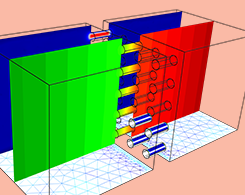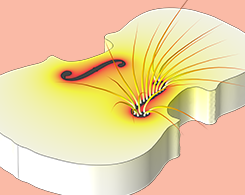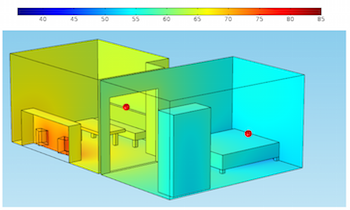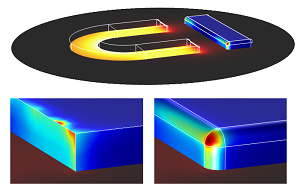All posts by Linus Andersson

How to Model an Anechoic Coating
Modeling an anechoic coating involves finding the smallest unit cell, truncating the geometry, and analyzing the wave diffration. The COMSOL® software includes predefined interfaces to do so.

Efficiently Calculating the Acoustic Transfer Impedance of a Perforate
Learn how to efficiently calculate the acoustic transfer impedance of a perforate in COMSOL Multiphysics®. (Hint: It involves applying a semitransparent boundary to the model.)

Analyze Violin Tone and Volume with Multiphysics Modeling
What is the purpose of those f-shaped holes in a violin? As it turns out, both the body of a violin and shape of its holes greatly affect its tone and volume.

Sweet Dreams with Diffusion Acoustics
Did you know that the acoustic diffusion equation is the quickest and easiest way to model high-frequency acoustics? Get an introduction to the concept of acoustic diffusion here.

Fillet Away Your Electromagnetic Field Singularities
Did you know that you can use fillets and chamfers in your electromagnetics models to avoid electromagnetic field singularities? Learn how in this tutorial blog post.

Why Room Acoustics Matters
How come a recorded soundscape is never as satisfying as listening to the real thing? The answer lies in the phenomenon of room acoustics. Get a comprehensive overview of this concept here.
Including Operators and Expressions in a Multiphysics Simulation Is Easier Than You Think
As most skilled COMSOL users, I am sure you know that you are not limited to just selecting what is in our drop-down lists. Say that you have invented your own measure of structural stress. You want it to be equal to the quadratic mean of the Tresca and von Mises stresses. Go to Plot Parameters to find out what these predefined stresses are called (trescasmsld and misessmsld if you are modeling in 3D with the Structural Mechanics Module). Now […]
